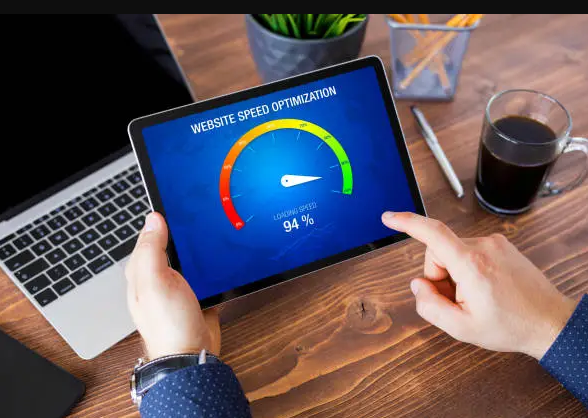
Page Speed Optimization: The Secret Weapon for Boosting On-Page SEO
How to Use Page Speed Optimization for On-Page SEO
Page speed optimization is one of the most impactful strategies for On-Page SEO. A fast-loading website improves user experience, reduces bounce rates, and satisfies Google’s Core Web Vitals—key factors for higher rankings. Here’s an in-depth guide to mastering page speed optimization:
1. Why Page Speed Matters for SEO
- Improved User Experience: 53% of users leave a site if it takes more than 3 seconds to load.
- Better Search Engine Rankings: Page speed is a direct ranking factor for Google.
- Core Web Vitals Compliance: Metrics like Largest Contentful Paint (LCP), First Input Delay (FID), and Cumulative Layout Shift (CLS) are critical for ranking success.
- Higher Conversions: Faster websites lead to better user engagement and increased conversions.
Conduct a Thorough Speed Audit
Begin with a speed audit to understand your site’s performance:
- Use Google PageSpeed Insights for Core Web Vitals insights.
- Analyze waterfall charts on GTmetrix for resource loading patterns.
- Check real-world loading times with Pingdom.
These tools help you identify bottlenecks such as unoptimized images, slow scripts, or poor hosting performance.
Compress and Optimize Images
Images often account for a large portion of a page’s load time. Optimize them by:
- Compressing Images: Use tools like TinyPNG, ImageOptim, or ShortPixel to reduce file size without losing quality.
- Using Modern Formats: Convert images to WebP or AVIF, which are lighter than PNG or JPEG.
- Responsive Images: Use HTML attributes like srcset to serve different image sizes for different devices.
4. Minify and Combine Files
Reducing the size of CSS, JavaScript, and HTML files is essential for faster loading:
- Minify Resources: Remove unnecessary spaces, comments, and code with tools like Terser or Minify.
- Combine Files: Merge CSS and JavaScript files where possible to reduce HTTP requests.
For WordPress users, plugins like Autoptimize and W3 Total Cache can handle these tasks seamlessly.
Enable Browser Caching
Browser caching allows users to store website files locally, reducing the need to reload resources during repeat visits. To enable caching:
- Configure the .htaccess file (for Apache servers).
- Use plugins like WP Super Cache to set up caching policies.
- For static files, set expiration headers for weeks or months.
Implement Lazy Loading
Lazy loading ensures that images, videos, and iframes are loaded only when they enter the user’s viewport. This dramatically improves initial page load times. Most modern platforms and frameworks, like WordPress, have built-in lazy loading features.
Use a Content Delivery Network (CDN)
A CDN distributes your website’s content across multiple servers globally. When users visit your site, the CDN serves data from the nearest server, reducing latency. Top CDN providers include:
- Cloudflare
- StackPath
- AWS CloudFront
- Akamai
Optimize Web Fonts
Web fonts can significantly slow down a page. Optimize them by:
- Limiting the number of font families and weights.
- Using modern font formats like WOFF2.
- Hosting fonts locally instead of relying on external sources.
Reduce Redirects
Redirects add unnecessary HTTP requests, increasing load time. Audit your website and minimize the use of 301 and 302 redirects.
Upgrade Your Hosting
A slow server can bottleneck even a perfectly optimized site. Consider:
- Upgrading to a Virtual Private Server (VPS) or dedicated server.
- Choosing a high-performance hosting provider like Kinsta, SiteGround, or WP Engine.
- Opting for managed WordPress hosting if you’re using WordPress.
Defer and Optimize JavaScript
JavaScript can block page rendering. Optimize it by:
- Deferring JavaScript Loading: Use the defer attribute to delay scripts until after loading the page.
- Asynchronous Loading: Allow scripts to load independently of other resources.
Implement Gzip or Brotli Compression
Compress files sent from your server using Gzip or Brotli. These methods significantly reduce file sizes, speeding up page load times.
Prioritize Critical CSS
Critical CSS refers to styles required for above-the-fold content. To ensure faster rendering, generate critical CSS using tools like Critical or WordPress plugins such as WP Rocket.
Regularly Monitor and Maintain
Website performance can degrade over time due to changes, updates, or added content. Regularly:
- Recheck page speed scores.
- Monitor changes in Core Web Vitals using Google Search Console.
- Update plugins, themes, and CMS versions.
Key Benefits of Page Speed Optimization for SEO
- Improved Search Rankings: A fast site signals quality to search engines.
- Reduced Bounce Rates: Faster loading reduces abandonment rates.
- Enhanced User Experience: Visitors stay longer and engage more.
- Better Core Web Vitals: Meeting Google’s performance benchmarks increases your site’s visibility.
Final Thoughts
Page speed optimization is an ongoing process that requires attention to detail and consistent effort. By following these strategies, you can ensure your website loads faster, performs better, and provides a seamless experience for users and search engines.
Optimize your website today and watch your rankings soar!


